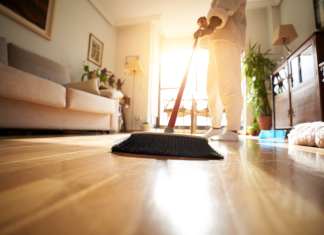Do you have a strong, foul-smelling odor coming out of your bath and shower area? Did you try dousing a bottle of cleaning product into your bathroom sink to put an end to the stinky stench? Such an issue is common for homeowners and, today, we will show you how to eliminate bathroom drain odor using these tried-and-proven methods!
The Culprit of Your Smelly Bathroom Drain
People usually don’t pay too much attention to the bathroom sink drain until something unpleasant happens. A clogged drain is a common issue. But, on top of that, an unpleasant odor sometimes comes out from the area as well.
When there is an unappetizing aroma in your bathroom, whether it is from the shower or sink area, bacteria growth is likely the bad guy in this case. Bacteria growth is actually an inherent part of your plumbing system, but when it develops too much, it will cause a terrible odor.
Water contamination can also lead to a bad-smelling odor in your bathroom. For example, when you notice the smell of a rotten egg, it is possible that there are too many sulfates in your water. Apart from the sink issue, too many sulfates can also be harmful to clothing.
It is also possible that the issue is caused by an error in your plumbing system. It can be caused by a leak or improper installation. Thus, if you notice such an issue right after you complete a plumbing job, chances are this is the case.
What to Do to Eliminate Bathroom Drain Odor
The sink is the workhorse in our bathroom. But, sometimes we forget to take good care of it. We use it daily, whether it is to wash our face, brush our teeth, or do many other hygiene routines. Thus, it will certainly experience buildup over time, and here are the things you can do to keep such an issue from happening.
-
Start with the sink
The first step for learning how to bathroom odor eliminator is cleaning the sink. It is the first area that comes into contact with water, hygiene products, and other foul matters, so this is the best place to start in this situation.
Grab your cleaning product and apply it around the faucet area. Let it sit for around 30 seconds and rub the sink surface evenly afterward. Don’t worry, the product will evaporate quickly so you will not have any weird smell lingering for too long.
If you have any item you want to clean, such as your soap tray, you can have it sprayed with the cleaning product and rest it for around ten minutes. You can then wipe the object with a clean cloth and put it back in its original place.
-
Move on to the sink drain
Now, you can remove the drain stopper and throw away any debris that is left in it. Make sure there is no debris left within the stopper and rinse it to make sure about it. When you don’t remove the debris, you give the bacteria a comfortable place to thrive.
If you notice that there is a clog buildup in your drain stopper, you can physically remove it using a wire hanger’s end or an old toothbrush. You can also do the same thing chemically using a noncorrosive pipe cleaner product.
A mixture of baking soda and vinegar is also a good alternative to a pipe cleaning product. The best ratio is 1:2, meaning you can include two cups of vinegar in the mixture for every cup of baking soda you use. It will start working in around 15 minutes.
-
Finish with the faucet
Good job! You already have your bathroom sink polished and get all of the debris out from the drain. However, if you really want your sink to gain its shine again, you should not skip cleaning the faucet area.
The faucets in your bathroom can quickly get grime accumulation, mainly because of the soapy water, toothpaste, and hair products that accidentally get on them. Thankfully, this is not a hard problem to deal with and it can be addressed with everyday products.
Rubbing your faucets immediately after you use them is the best way to prevent water spots. You can then wipe the faucets with a dab of baby oil. Apply the oil thoroughly and you will see your reflection from the faucets after just several wipes.
Other Tips for Cleaning Bathroom Sink Drain
It is a good idea to clean your bathroom sink regularly. No matter how busy you are, you should do it at least once a month. Otherwise, buildup will develop in no time and you might be required to ask for professional help. You should also pay attention to your sink material since different types require different treatments.
Stone sinks, for example, should not be cleaned with acidic products. You may also need to apply stone polish after cleaning. Quartz sinks, on the other hand, are less porous and much more durable than other natural sink materials. You can, therefore, use acidic products, but you should not let it sit around too long.
Speaking of bathroom sink cleaning products, you can actually use any general cleaning spray and a piece of soft fabric to keep most bathroom sinks looking good. If you want a DIY option, you can use a combination of mild detergent and vinegar. This is strong enough to remove stubborn grime but forgiving enough to not harm your sink.
If you want to make cleaning the bathroom sink and drain a habit, you can keep a cleaning kit not far from the bathroom counter or anywhere else that is easy to reach. This should include things like rubber gloves, a cleaning solution (it can be store-bought or homemade), and a clean piece of fabric.
The Takeaway
No matter how careful you are about using soap, shampoo, and face wash, grease and other particles will eventually make a buildup in your bathroom sink. Thank goodness, by following the tips above, you can learn how to eliminate bathroom drain odor and get your bathroom back to a clean and pristine condition.















